
Exploring the Mystical Beauty of Snæfellsjökull National Park
Discover the enchanting landscapes of Snæfellsjökull National Park, where Icelandic nature, history, and adventure come together under the shadow of a mystical glacier.
Snæfellsjökull National Park, located on the Snæfellsnes Peninsula in Iceland, is a haven for nature lovers and adventure seekers alike. Dominated by the majestic Snæfellsjökull glacier, this park offers visitors an unforgettable experience. The glacier itself is a dormant volcano, famously featured in Jules Verne's novel 'Journey to the Center of the Earth.' Its snow-capped peak is visible from many miles away and is often shrouded in a mystical mist, adding to its allure. The park's landscape is incredibly diverse, with lava fields, caves, and black sand beaches providing a dramatic backdrop. Visitors can explore the rugged coastline, where waves crash against towering cliffs and sea birds nest in the craggy rocks. Hikers will find numerous trails that wind through the park, offering various levels of difficulty and rewarding views at every turn. The varied terrain means there's something for everyone, from easy walks to challenging climbs. Wildlife enthusiasts will appreciate the rich biodiversity of the park. Arctic foxes, seals, and a variety of bird species call this area home. During the summer months, the park's flora bursts into bloom, painting the landscape with vibrant colors. Cultural history is also a big draw, with ancient fishing villages and historical sites scattered throughout the area, providing a glimpse into Iceland's past. Whether you're looking to immerse yourself in nature, delve into local history, or simply enjoy the stunning scenery, Snæfellsjökull National Park is a must-visit destination.
Local tips in Snæfellsjökull National Park
- Dress in layers and bring waterproof clothing, as the weather can change rapidly.
- Plan your visit during the summer months for the best chance of clear views and blooming flora.
- Bring a good pair of hiking boots to navigate the park's diverse and sometimes rugged terrain.
- Don't forget your camera; the park offers countless photo opportunities.
- Check local guides for information on guided tours, which can provide deeper insights into the park's natural and cultural history.
- Respect the natural environment by sticking to marked trails and taking your litter with you.
Exploring the Mystical Beauty of Snæfellsjökull National Park
Snæfellsjökull National Park, located on the Snæfellsnes Peninsula in Iceland, is a haven for nature lovers and adventure seekers alike. Dominated by the majestic Snæfellsjökull glacier, this park offers visitors an unforgettable experience. The glacier itself is a dormant volcano, famously featured in Jules Verne's novel 'Journey to the Center of the Earth.' Its snow-capped peak is visible from many miles away and is often shrouded in a mystical mist, adding to its allure. The park's landscape is incredibly diverse, with lava fields, caves, and black sand beaches providing a dramatic backdrop. Visitors can explore the rugged coastline, where waves crash against towering cliffs and sea birds nest in the craggy rocks. Hikers will find numerous trails that wind through the park, offering various levels of difficulty and rewarding views at every turn. The varied terrain means there's something for everyone, from easy walks to challenging climbs. Wildlife enthusiasts will appreciate the rich biodiversity of the park. Arctic foxes, seals, and a variety of bird species call this area home. During the summer months, the park's flora bursts into bloom, painting the landscape with vibrant colors. Cultural history is also a big draw, with ancient fishing villages and historical sites scattered throughout the area, providing a glimpse into Iceland's past. Whether you're looking to immerse yourself in nature, delve into local history, or simply enjoy the stunning scenery, Snæfellsjökull National Park is a must-visit destination.
When is the best time to go to Snæfellsjökull National Park?
Iconic landmarks you can’t miss
Vatnshellir Cave
Discover the enchanting Vatnshellir Cave in Snæfellsjökull National Park, a stunning lava tube revealing Iceland's geological wonders.

Gestastofa á Malarrif (Visitor Center at Malarrif)
Discover the gateway to Snæfellsjökull National Park at Gestastofa á Malarrif, where nature, knowledge, and adventure converge.

Snæfellsjökull
Discover the breathtaking beauty and rich mythology of Snæfellsjökull Glacier, Iceland's iconic natural wonder and a haven for adventure seekers.

Gufuskálar
Discover the historical charm and breathtaking coastal views at Gufuskálar, a unique landmark showcasing Iceland's rich maritime heritage.

National Park Secret Entrance
Uncover the serene beauty of Iceland at the National Park Secret Entrance, a hidden nature preserve perfect for nature lovers and adventure seekers.

Keflavíkurvör
Explore Keflavíkurvör, a historical landmark in Hellissandur, where Iceland's maritime heritage meets breathtaking coastal beauty.

Unmissable attractions to see
Stone Bridge
Discover the breathtaking Stone Bridge in Arnarstapi, a stunning natural marvel connecting cliffs and sea, perfect for photography and coastal exploration.

Arnarstapi Cliff Viewpoint
Experience the breathtaking beauty of Arnarstapi Cliff Viewpoint, where dramatic cliffs meet the Atlantic Ocean, offering stunning views and unforgettable moments.

Lýsuhóll
Experience the best of Icelandic cuisine and scenic horseback riding at Lýsuhóll in Snæfellsbær—a true delight for every traveler.

Bæjarfoss
Discover the enchanting Bæjarfoss waterfall in Iceland's Western Region, a serene retreat surrounded by breathtaking landscapes and natural beauty.
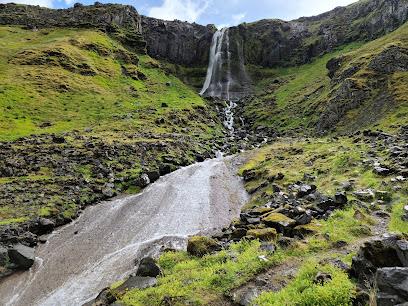
Remains of Epine GY7 Fishing Trawler
Discover the haunting remains of the Epine GY7 fishing trawler at Djúpalónssandur, where history meets stunning Icelandic landscapes.

Bárðarlaug
Experience the serene beauty and rich cultural heritage at Bárðarlaug, a must-visit tourist attraction in Hellnar, Iceland.

The Torch
Discover the enchanting beauty of The Torch in Snæfellsbær, Iceland – a stunning landmark surrounded by nature's wonders.

Murals of Rif
Experience the vibrant Murals of Rif, an outdoor gallery showcasing the artistic spirit of the community with stunning visual stories.

Whale mural
Explore the Whale Mural in Grundarfjörður, an artistic homage to Iceland's marine life, set against breathtaking landscapes.

Minifoss
Experience the breathtaking landscapes and serene hiking trails of Minifoss in Ólafsvík, a hidden gem for nature lovers in Iceland.

Essential places to dine
Bjargarsteinn Mathús
Experience authentic Icelandic flavors at Bjargarsteinn Mathús with stunning views in Grundarfjörður.

Sker Restaurant
Experience the best of Icelandic cuisine at Sker Restaurant in Ólafsvík - fresh seafood and local flavors await.

Harbour Cafe
Experience delightful dining at Harbour Cafe in Grundarfjörður with locally sourced dishes and stunning scenic views.

Stapinn
Discover Stapinn: where traditional Icelandic flavors meet stunning coastal views in Arnarstapi.

Hotel Langaholt & Restaurant
Experience unparalleled comfort at Hotel Langaholt & Restaurant amidst the stunning landscapes of Snæfellsbær, perfect for nature lovers and culinary enthusiasts.

Arnarstapi Center and Snjófell Restaurant
Experience Icelandic flavors at Arnarstapi Center's Snjófell Restaurant amidst breathtaking coastal views.

Samkomuhúsið Arnarstapa
Experience authentic Icelandic cuisine in a cozy setting at Samkomuhúsið Arnarstapa amidst breathtaking landscapes.

Fosshotel Hellnar
Experience Iceland's breathtaking landscapes and culinary delights at Fosshotel Hellnar - your perfect retreat on the Snæfellsnes Peninsula.

Lýsuhóll
Experience authentic Icelandic hospitality at Lýsuhóll - where great food meets breathtaking landscapes in Snæfellsbær.

Viðvík Restaurant
Experience authentic Icelandic flavors at Viðvík Restaurant in Hellissandur, where every dish tells a story of local tradition and fresh ingredients.

FRISTA Food Truck Arnarstapi
Experience authentic Icelandic street food at FRISTA Food Truck in Arnarstapi while enjoying stunning views of nature's beauty.

Matarlist
Experience exquisite Icelandic cuisine at Matarlist in Hellissandur—where local flavors meet stunning landscapes.
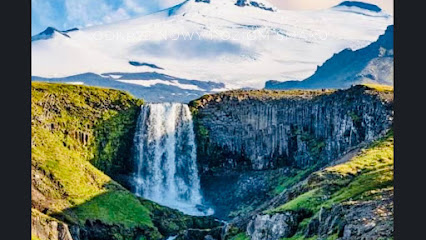
Reks
Discover Reks in Ólafsvík: A Culinary Haven Serving Authentic Icelandic Cuisine with Stunning Coastal Views.

Arnarbær
Discover culinary delights at Arnarbær in beautiful Arnarstapi, where local flavors meet stunning coastal views.

Hlaðan Veitingahús
Experience authentic Icelandic cuisine amidst breathtaking landscapes at Hlaðan Veitingahús in Snæfellsnes.

Markets, malls and hidden boutiques
Valeria Specialty Coffee & souvenirs
Savor freshly roasted coffee and unique souvenirs in the charming town of Grundarfjörður, Iceland at Valeria Specialty Coffee & Souvenirs.

Samkaup
Explore the rich flavors of Iceland at Samkaup in Grundarfjörður, where local ingredients meet a warm, welcoming atmosphere.

Græna kompaníið
Discover the perfect blend of rich coffee and captivating literature at Græna kompaníið in Grundarfjörður.

Kassinn
Explore Iceland's Snæfellsnes Peninsula with essential provisions from Kassinn, Ólafsvík's trusted supermarket for locals and travelers alike.

Stapafell
Discover unique Icelandic souvenirs and local crafts at Stapafell, your premier gift shop in Keflavík, perfect for memorable keepsakes.

Útgerðin - Concept Store & Wine Room
Explore Útgerðin in Hellissandur, a unique concept store blending art, coffee culture, and fine wines amidst stunning Icelandic scenery.

Bókaverzlun Breiðafjarðar - Kram Stykkishólmi
Explore Bókaverzlun Breiðafjarðar - Kram Stykkishólmi, a charming bookstore offering unique gifts, books, and Icelandic treasures in Stykkishólmur.

Vínbúðin
Discover Iceland's unique drinking culture at Vínbúðin, the state liquor store in Grundarfjörður, offering a wide variety of local and imported beverages.

Pakkhúsið
Discover the maritime history and cultural heritage of Ólafsvík at Pakkhúsið Museum, an engaging destination for history enthusiasts and travelers alike.

Kjörbúðin
Explore Kjörbúðin in Grundarfjörður, your go-to grocery store for local goods and everyday essentials on the stunning Snæfellsnes Peninsula.

Wool ARTelier
Explore the creative world of Wool ARTelier, where Iceland's rich craftsmanship meets artistic expression in a charming studio setting.

Bryggjubúðin
Experience Flatey’s charm at Bryggjubúðin, a delightful gift shop and café featuring local crafts, delicious treats, and welcoming ambiance.

Hrund
Explore Hrund Gift Shop in Ólafsvík for unique Icelandic crafts, souvenirs, and local treasures that capture the spirit of Iceland.
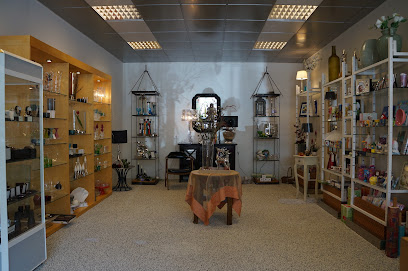
Landnámssetrið
Discover unique Icelandic souvenirs at Landnámssetrið, a charming gift shop in Borgarnes showcasing local craftsmanship and culture.

Kirkjufell knitting
Explore the charm of Icelandic craftsmanship at Kirkjufell Knitting, a must-visit clothing store in Grundarfjörður for unique souvenirs.
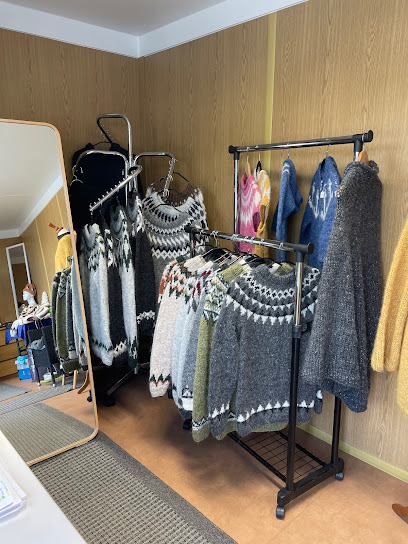
Essential bars & hidden hideouts
Bjargarsteinn Mathús
Discover the authentic flavors of Iceland at Bjargarsteinn Mathús, where local ingredients meet breathtaking views in Grundarfjörður.

Sker Restaurant
Discover the flavors of Iceland at Sker Restaurant, where local ingredients meet stunning views in Ólafsvík.

Narfeyrarstofa
Experience the best of Icelandic cuisine at Narfeyrarstofa, a must-visit restaurant in Stykkishólmur, known for its fresh ingredients and warm atmosphere.

Harbour Cafe
Experience the flavors of Iceland at Harbour Cafe, where every meal is a celebration of local ingredients and stunning views.
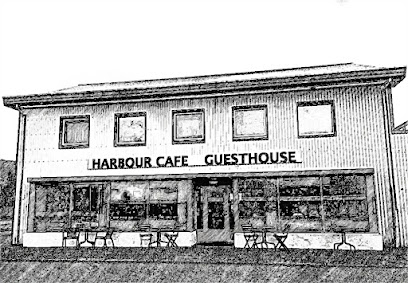
Stapinn
Experience the flavors of Iceland at Stapinn, a cozy restaurant and café in Arnarstapi, where local ingredients meet stunning views.

Arnarstapi Center and Snjófell Restaurant
Savor the flavors of Iceland at Arnarstapi Center and Snjófell Restaurant, where local cuisine meets stunning coastal views.

The Freezer Hostel, Apartments & Culture Centre
Experience the vibrant cultural scene at The Freezer Hostel, Apartments & Culture Centre, where art, music, and comfort meet in Iceland.

Samkomuhúsið Arnarstapa
Discover the essence of Icelandic cuisine at Samkomuhúsið Arnarstapa, where breathtaking views meet delightful flavors.

Kaffi 59
Discover the flavors of Iceland at Kaffi 59, a cozy restaurant in Grundarfjörður offering fresh local cuisine and stunning mountain views.
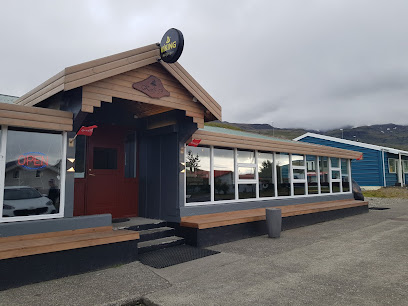
Fosshotel Hellnar
Experience the beauty of Iceland at Fosshotel Hellnar, a cozy hotel and restaurant in the heart of nature's paradise.

Skipper Restaurant
Experience the best of Icelandic cuisine at Skipper Restaurant, where fresh seafood meets stunning views in Stykkishólmur.

Matarlist
Experience the flavors of Iceland at Matarlist, a must-visit restaurant in Hellissandur, where local ingredients and warm hospitality await you.
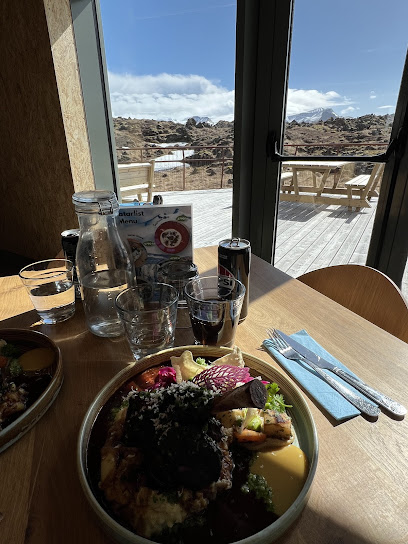
Snæfellsjökull
Explore the enchanting Snæfellsjökull volcano, a breathtaking Icelandic gem known for its stunning landscapes and rich folklore.

Mæstro - Street food
Experience the authentic taste of Icelandic street food at Mæsto in Grundarfjörður, where fresh ingredients meet local flavors.

Útgerðin Bar
Experience the lively nightlife at Útgerðin Bar in Akranes, where modern design meets a welcoming atmosphere and a great selection of drinks.

Local Phrases about Snæfellsjökull National Park
-
- HelloHalló
[ha-loh] - GoodbyeBless
[bles] - YesJá
[ya] - NoNei
[ney] - Please/You're welcomeGjörðu svo vel
[gyor-thu svo vel] - Thank youTakk
[tahk] - Excuse me/SorryAfsakið
[af-sa-kith] - How are you?Hvað segir þú?
[kva-th seh-ir thu] - Fine. And you?Fínt. Og þú?
[feent. oh thu] - Do you speak English?Talar þú ensku?
[ta-lar thu ens-ku] - I don't understandÉg skil ekki
[yeh skil ek-ki]
- HelloHalló
-
- I'd like to see the menu, pleaseÉg ætla að skoða matseðilinn, takk
[yeh ait-la ath sko-tha mat-she-thil-inn, tahk] - I don't eat meatÉg borða ekki kjöt
[yeh bor-tha ek-ki chyot] - Cheers!Skál!
[skowl] - I would like to pay, pleaseÉg myndi vilja greiða, takk
[yeh min-di vil-ya gray-tha, tahk]
- I'd like to see the menu, pleaseÉg ætla að skoða matseðilinn, takk
-
- Help!Hjálp!
[hyowlp] - Go away!Farðu í burtu!
[far-thu e bur-thu] - Call the Police!Hringdu í lögregluna!
[hring-du ee lo-gre-gluna] - Call a doctor!Hringdu í lækninn!
[hring-du ee læk-nin] - I'm lostÉg er villtur
[yeh air vil-tur] - I'm illÉg er veikur
[yeh air vay-kur]
- Help!Hjálp!
-
- I'd like to buy...Ég ætla að kaupa...
[yeh ait-la ath koy-pa] - I'm just lookingÉg er bara að skoða
[yeh air ba-ra ath sko-tha] - How much is it?Hvað kostar það?
[kva-th kohs-tar thah] - That's too expensiveÞað er of dýrt
[thah eth ohf deert] - Can you lower the price?Geturðu lækkað verðið?
[ge-thur-thu laik-kath ver-thith]
- I'd like to buy...Ég ætla að kaupa...
-
- What time is it?Hvað er klukkan?
[kva-th eth klu-khan] - It's one o'clockKlukkan er eitt
[klu-khan eth ayt] - Half past (10)Hálf tíu
[howlf tee-u] - MorningMorgunn
[mawr-gunn] - AfternoonSíðdegis
[seed-de-gis] - EveningKvöld
[kvoeld] - YesterdayÍ gær
[ee gyer] - TodayÍ dag
[ee daug] - TomorrowÁ morgun
[ow mawr-gun] - 1Einn
[aytn] - 2Tvö
[tvo] - 3Þrír
[thrir] - 4Fjórir
[fyow-rir] - 5Fimm
[fim] - 6Sex
[seks] - 7Sjö
[syow] - 8Átta
[ow-tha] - 9Níu
[nyu] - 10Tíu
[tee-u]
- What time is it?Hvað er klukkan?
-
- Where's a/the...?Hvar er...
[kvar eth] - What's the address?Hvað er heimilisfangið?
[kva-th eth hay-mi-lis-fan-gith] - Can you show me (on the map)?Geturðu sýnt mér (á kortinu)?
[ge-thur-thu seent mair (ow kort-inu)] - When's the next (bus)?Hvenær kemur næsti (strætisvagn)?
[kven-ayer ke-mur nai-sti (strai-tis-vagn)] - A ticket (to ....)Miða (til ...)
[mee-tha (til)]
- Where's a/the...?Hvar er...
History of Snæfellsjökull National Park
-
Snæfellsjökull, a stratovolcano with a glacier covering its summit, formed approximately 700,000 years ago. The volcano's eruptions over millennia have sculpted the landscape, creating craters, lava fields, and caves. The most recent eruption occurred around 1,800 years ago, leaving behind the current topography that visitors see today.
-
Snæfellsjökull features prominently in Icelandic sagas. The most notable mention is in the 'Bárðar saga Snæfellsáss', where the half-troll, half-human Bárður Snæfellsás is said to have settled in the area and become a guardian spirit of the mountain. This saga intertwines myth and history, showcasing the deep cultural significance of Snæfellsjökull to local inhabitants.
-
Snæfellsjökull gained international fame through Jules Verne's 1864 science fiction novel 'Journey to the Center of the Earth'. In the novel, the mountain serves as the gateway to a subterranean world. This literary connection has fueled the imaginations of many visitors and added a layer of mystique to the already awe-inspiring landscape.
-
During Iceland's Settlement Era (circa 870-930 CE), the Snæfellsnes Peninsula, where Snæfellsjökull is located, became a significant area for settlers. Archaeological evidence points to early farmsteads and fishing operations. The area's natural resources, including rich fishing grounds and fertile land, were crucial for the survival and prosperity of these early inhabitants.
-
Snæfellsjökull National Park was established in 2001, becoming Iceland's first national park to include both marine and terrestrial areas. The park was created to protect the unique geological formations, diverse ecosystems, and cultural heritage of the region. This designation has helped to preserve the natural beauty and historical significance of the area for future generations.
-
The region around Snæfellsjökull hosts several cultural festivals that celebrate Icelandic traditions. One such event is the 'Berserkjahraun Viking Festival', which includes reenactments of Viking battles, traditional crafts, and music. These festivals offer visitors a glimpse into Iceland's rich cultural heritage and the enduring legacy of the Viking Age.
-
In recent years, Snæfellsjökull National Park has become a focal point for scientific research and conservation efforts. Studies on glaciology, volcanology, and biodiversity are conducted to understand and preserve the park's unique environment. Conservation initiatives aim to protect the fragile ecosystems from the impacts of climate change and human activity.
Snæfellsjökull National Park Essentials
-
Snæfellsjökull National Park is located on the Snæfellsnes Peninsula in western Iceland. The nearest international airport is Keflavík International Airport in Reykjavík, approximately 200 kilometers away. From Reykjavík, you can rent a car or take a bus tour to reach the park. The drive typically takes around 2.5 to 3 hours, offering scenic views along the way.
-
While renting a car is the most convenient way to explore Snæfellsjökull National Park and its surroundings, there are also guided bus tours available from Reykjavík. Within the park, many of the trails and attractions are accessible by foot. Keep in mind that some roads within the park are gravel and may require a 4x4 vehicle.
-
The official currency in Iceland is the Icelandic Króna (ISK). Credit cards are widely accepted throughout the country, including in Snæfellsjökull National Park. However, it is advisable to carry some cash for smaller establishments and remote areas where card payment may not be available. ATMs can be found in nearby towns such as Ólafsvík and Hellissandur.
-
Snæfellsjökull National Park is generally a safe destination for tourists. However, it is essential to take standard precautions. Be cautious when hiking and exploring remote areas, as weather conditions can change rapidly. There are no specific high-crime areas targeting tourists, but always keep an eye on your belongings and avoid leaving valuables in your car.
-
In case of emergency, dial 112 for immediate assistance. The nearest medical facilities are located in the towns of Ólafsvík and Stykkishólmur. It is recommended to have travel insurance that covers medical emergencies. For minor health issues, there are pharmacies in the nearby towns.
-
Fashion: Do dress in layers and wear waterproof clothing, as weather can be unpredictable. Don't wear inappropriate footwear; sturdy hiking boots are recommended. Religion: Do respect local customs and traditions. Public Transport: Do adhere to schedules and be punctual, as buses may not run frequently. Greetings: Do greet people with a simple 'Hello' or 'Góðan daginn'. Eating & Drinking: Do try local delicacies such as fresh seafood and skyr. Don't leave food waste behind; always carry your trash out of the park.
-
To experience Snæfellsjökull National Park like a local, visit during the off-season when the park is less crowded. Engage with locals in nearby towns to learn about the area's folklore and history. Don't miss out on a visit to the Vatnshellir Cave, a lava tube cave offering guided tours. For a unique experience, try whale watching tours departing from the nearby harbors.
Nearby Cities to Snæfellsjökull National Park
-
Things To Do in Stykkisholmur
-
Things To Do in Borgarnes
-
Things To Do in Keflavik
-
Things To Do in Reykjavik
-
Things To Do in Kopavogur
-
Things To Do in Hafnarfjordur
-
Things To Do in Isafjordur
-
Things To Do in Grindavik
-
Things To Do in Hveragerdi
-
Things To Do in Selfoss
-
Things To Do in Blonduos
-
Things To Do in Saudarkrokur
-
Things To Do in Dalvik
-
Things To Do in Akureyri
-
Things To Do in Vik











